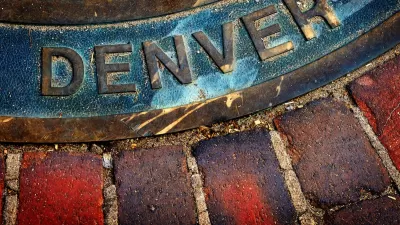Bill Fulton and Chris Haller look at Denver's recent efforts to involve its residents in helping to solve next years anticipated $94 million budget gap.
Is it just us, or did cities not seem to need any help in building their budgets when their coffers were flush. Now, as deficits grow, cities seem to be increasingly relying on citizen participation to make the tough decisions about where to cut. The latter case is certainly the environment into which Mayor Michael Hancock has launched "a two-part community engagement strategy to gather public input on important financial issues facing the City of Denver."
As Fulton and Haller describe, both phases of Mayor Hancock's strategy incorporate new technologies to elicit feedback. In the first, "A series of public forums put keypad polling devices in the hands of city employees and Denver residents to test the best ideas for how to address the City's financial challenges." The second saw the launch of a new interactive website, Delivering Denver's Future, which "gives residents a unique opportunity to weigh in on how to fix the city's broken budget."
The site is based around a workbook tool which allows users to "explore a series of specific budgetary questions, such as whether or not employees' pension contributions should be increased. While participants go through the process of making tough choices about cutting expenses or raising taxes with each option, they see a chart that automatically updates to indicate how much of the $94 mil. budget shortfall they have solved."
Fulton and Haller report that, to date, "the process has reached 500 people through the public workshops and 700+ citizens have voiced their preferences through the online budgeting website."
FULL STORY: Delivering Denver’s Future - A Participatory Budgeting Process

Trump Administration Could Effectively End Housing Voucher Program
Federal officials are eyeing major cuts to the Section 8 program that helps millions of low-income households pay rent.

Planetizen Federal Action Tracker
A weekly monitor of how Trump’s orders and actions are impacting planners and planning in America.

The 120 Year Old Tiny Home Villages That Sheltered San Francisco’s Earthquake Refugees
More than a century ago, San Francisco mobilized to house thousands of residents displaced by the 1906 earthquake. Could their strategy offer a model for the present?

Alabama School Forestry Initiative Brings Trees to Schoolyards
Trees can improve physical and mental health for students and commnity members.

NYC Outdoor Dining Could Get a Re-Do
The city council is considering making the al fresco dining program year-round to address cost concerns from small businesses.

HSR Reaches Key Settlement in Northern California City
The state’s high-speed rail authority reached an agreement with Millbrae, a key city on the train’s proposed route to San Francisco.
Urban Design for Planners 1: Software Tools
This six-course series explores essential urban design concepts using open source software and equips planners with the tools they need to participate fully in the urban design process.
Planning for Universal Design
Learn the tools for implementing Universal Design in planning regulations.
Ada County Highway District
Clanton & Associates, Inc.
Jessamine County Fiscal Court
Institute for Housing and Urban Development Studies (IHS)
City of Grandview
Harvard GSD Executive Education
Toledo-Lucas County Plan Commissions
Salt Lake City
NYU Wagner Graduate School of Public Service





























